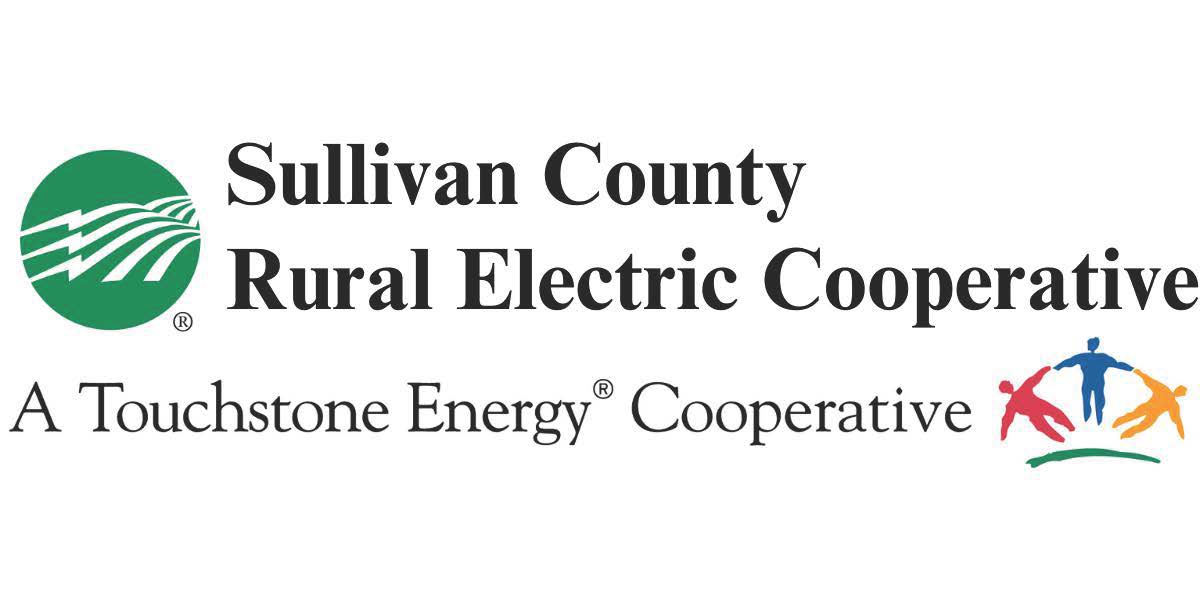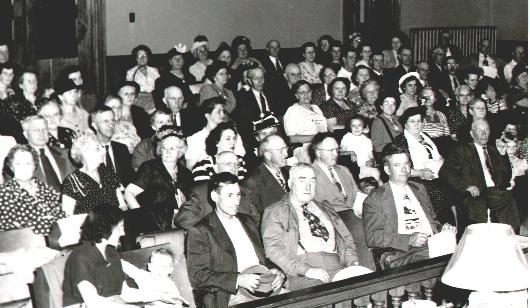What is a Cooperative?
The Cooperative form of business is unique and has existed for nearly 150 years. Cooperatives are a part of our everyday life with services from diverse groups such as the Associated Press, Agway, Diamond Walnuts, and others. There are nearly 900 electric cooperatives in the United States.
Cooperatives differ from private companies in that there is no stock and no stockholders. The users of the electric systems are the owners of the service. By being a consumer of Sullivan County REC, you are an owner and entitled to attend the annual meeting, vote for directors, and vote on any issues before the membership.
Prior to the formation of electric cooperatives very few rural areas had central station electric service. The formation of non-profit cooperatives along with low interest Federal loans made it feasible to extend electric power to rural areas.
Six Members Per Mile
Cooperatives were formed after private power companies failed to utilize the low interest Federal loan program to extend electric service into rural areas.
Today Sullivan County REC still serves only six members per mile of line, compared to the typical power company having 32 or more consumers per mile. Sullivan County REC no longer receives low interest loans from the Federal government.
The Beginnings, 1937 - 1946
This story begins with a very simple idea. What if rural areas had electricity? What would central station electricity do for farm productivity? Could it raise rural people up from the poverty they had always known? Why haven't power companies extended their lines into rural areas? Would they be interested in growing and expanding?
You would think existing power companies would have simply expanded into the rural areas. But the laws of economics prevented capital-intensive electric utilities from making a return on their investment. There simply were not enough residents, farms, and businesses to make it profitable for an electric utility to expand into many rural areas. Where they did expand into these areas the companies required residents to pay for lines up-front and pay high monthly charges in order to make a return on investment. Very few rural residents could afford the cost and continued to sit in the dark.
Government Takes Action
After 30 years of studies the federal government took action. Franklin D. Roosevelt (FDR) took a personal interest in rural electrification after experiences in rural Georgia with high rates and limited service. Interestingly, his wife's uncle, President Teddy Roosevelt, also looked into the idea of rural electrification 30 years earlier.
FDF first offered low-interest loans to existing power companies with the hopes of luring them into serving the rural areas. A few took the offer but most did not and rural people continued to struggle without electricity just like they had for years. Only this time the people were emboldened to take take action with the potential of a federal loan program.
Let's do it Ourselves
After the power companies rejected the federal loan program, someone came up with the idea of serving rural areas with a cooperative. Why not form a rural electric cooperative to bring electricity to themselves? Farmers were very familiar with the cooperative form of business since they used co-ops to buy goods together (ex. Ace Hardware) and to sell their products (ex. Land O' Lakes). So the idea took hold - we'll form cooperatives to borrow money from the Federal Government and build our own system.
Today the rural electric program is far and vast and covers 47 of the 50 states. There are 841 cooperatives like Sullivan serving 42 million people, 12 percent of the nation's population. Another 65 cooperatives provide power supply. cooperatives own about half of the distribution lines in the country and employ over 70,000 people.
These cooperatives are all different sizes located in different geographic areas with unique cultures that reflect their local personalities. But in spite of differences rural electric cooperatives share common values and have similar electric systems. Line crews can travel anywhere in the country and can safely work on other cooperatives' lines since the electric systems were built using the same specifications.
Sullivan County REC
It is unknown who first heard about rural electrification in Sullivan County but it is clear that there was a group of dedicated individuals who were very interested and determined to get electricity. The first incorporators were:
-
Lynn Carpenter - Shunk
-
L.L. Peterman - Sonestown
-
Chester Peterman - Sonestown
-
James D. Wheal - Sonestown
-
Gleason Lewis - Forksville
-
H.A. Heess - Forksville
-
William Morgan - Wheelerville
-
Fred M. Rodgers - Forksville
-
Charles A. Golder - Muncy Valley
-
T.C. Lewis - Hillsgrove
-
Herbert L. Molyneux - Forksville
-
F. Marquardt - Muncy Valley
-
Carl D. Molyneux - Forksville
-
John Norton - Forksville
-
Samuel B. Kilmer - Forksville
We owe them a debt of gratitude and the many other volunteers who collected $5 membership fees and secured rights-of-way. They did this in addition to all their other daily activities. Without these pioneers we would not have electrical service in our rural areas today. Even today a power company could not afford to serve all of the rural areas your Cooperative serves.
These incorporators faced a stiff uphill battle. The rural electric program was just starting and no one knew much about it. These men had to secure a $5 membership fee from potential members to show commitment in order to get financing from REA. Many were afraid that the Cooperative would fail leaving them responsible for large debts. In fact, Sullivan's Membership Agreement and Bylaws addressed this issue by stating that individual members of the Cooperative are not responsible for the debt of the Co-op. This language remains today.
In spite of no money, no office, no employees, no equipment, and no guarantee of success - they pushed on - signing up members and getting rights-of-way. When there were two or more members per mile with paid memberships and signed right-of-way agreements, a map was made and submitted to REA for funding. With no equipment and no linemen the co-op turned to a contractor to build the line. In 1937 Hess & Barton of Pittsburgh was engaged to build the first 130 miles of line.
Here is a video produced by the National Rural Electric Cooperative Association providing a brief history of cooperatives: Cooperative History



